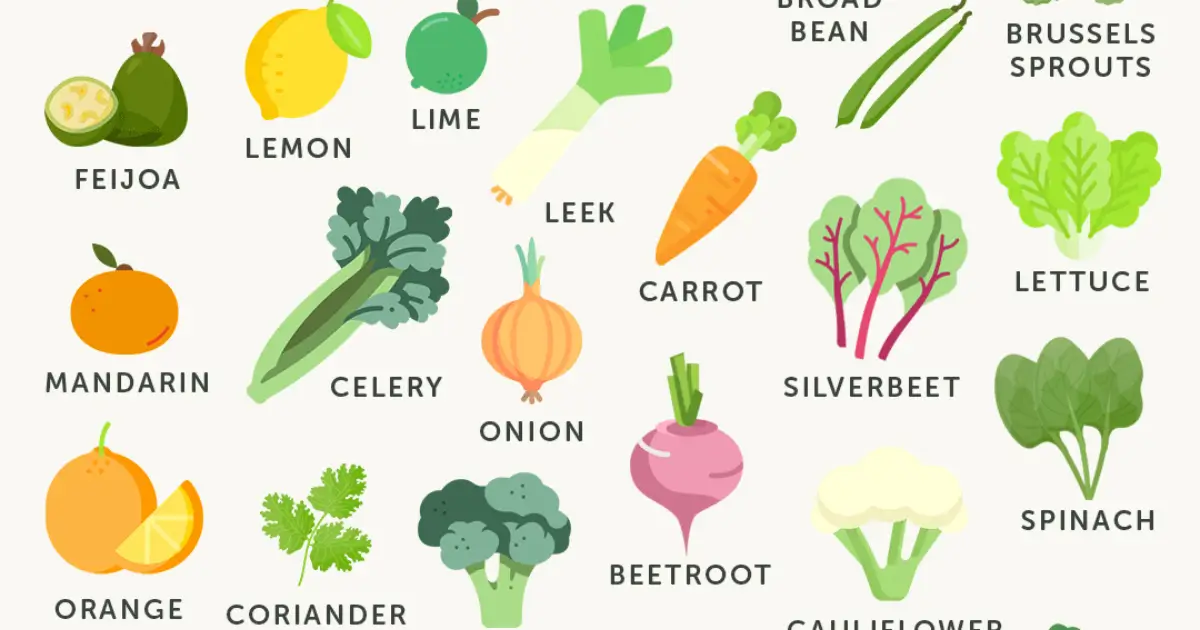15 Easiest & Best Vegetables to Plant in March
1. Introduction :
March is an exciting month for gardeners. As the cold days of winter start fading, it’s time to prepare for a successful spring planting season. The transition from winter to spring creates ideal conditions for cool-season crops that thrive in mild temperatures and resist light frosts.
This guide will walk you through the 15 easiest & best vegetables to plant in March, with detailed planting instructions, soil preparation techniques, essential care tips, and troubleshooting advice to help you maximize your garden’s productivity.
Table of Contents
2. Understanding the Basics :
Before planting, it’s essential to understand the key growing conditions that influence success in March gardening.
Soil Temperature & Frost Protection :
- Cool-season vegetables can tolerate light frosts but require soil temperatures between 40°F and 55°F (4°C – 13°C) for optimal growth.
- Use a soil thermometer to check ground temperature before planting.
- Protect seedlings with cloches, row covers, or cold frames during unexpected frosts.
Soil Preparation :
- Loosen the soil to at least 8-12 inches deep for root vegetables.
- Amend with compost or aged manure to boost nutrients.
- Ensure good drainage to prevent waterlogging.
Companion Planting for Better Growth :
Pairing certain plants together enhances growth and deters pests:
- Spinach & Radishes : Radishes break up soil, allowing spinach roots to spread.
- Peas & Carrots : Peas enrich the soil with nitrogen, benefiting carrots.
- Onions & Cabbage : Onions repel cabbage worms.
3. Choosing the Right Plants :
The best vegetables to plant in March are those that can handle unpredictable temperatures. Here are 15 foolproof options:
Leafy Greens :
- Spinach – Tolerates frost and grows quickly.
- Lettuce – Harvestable within a few weeks.
- Arugula – Adds a spicy touch to salads.
- Mustard Greens – Fast-growing with a peppery flavor.
- Swiss Chard – Produces continuously throughout spring.
Root Vegetables :
- Carrots – Sweet and crisp when grown in cool soil.
- Beets – Thrive in early spring and improve soil structure.
- Radishes – One of the fastest-growing vegetables (ready in 25 days).
- Turnips – Tasty greens and root harvest.
- Onions – Hardy and easy to grow from sets.
Cruciferous Vegetables :
- Kale – Becomes sweeter in cool weather.
- Cabbage – Grows well in mild temperatures.
- Bok Choy – Prefers cooler temperatures for tender leaves.
Legumes :
- Peas – Grow quickly and fix nitrogen in the soil.
Herbs (Bonus) :
- Cilantro – Prefers cooler weather and grows rapidly.
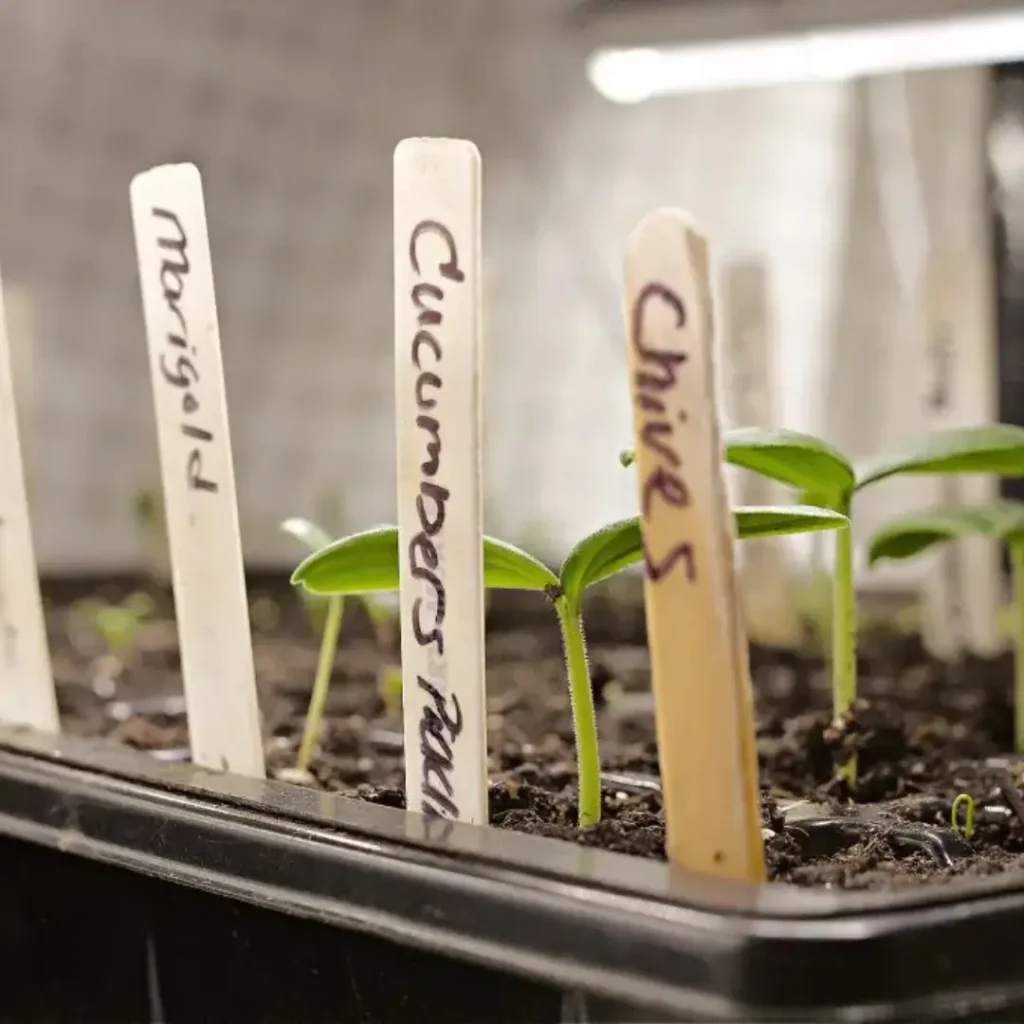
4. Planting Guide & Setup :
Step 1 : Soil Preparation
- Remove weeds and debris from the planting area.
- Work in aged compost, peat moss, or well-rotted manure for fertility.
- Ensure soil is well-draining yet moisture-retentive.
Step 2 : Direct Sowing vs. Transplanting
- Direct Sow: Carrots, radishes, peas, beets, turnips, spinach.
- Transplant: Lettuce, kale, cabbage, bok choy.
Step 3: Spacing & Depth Guidelines :
| Vegetable | Planting Depth | Spacing |
|---|---|---|
| Carrots | ¼ inch | 2 inches apart |
| Lettuce | ½ inch | 6 inches apart |
| Peas | 1 inch | 2 inches apart |
| Cabbage | ½ inch | 18 inches apart |
| Onions | 1 inch | 4 inches apart |
15 Easiest & Best Vegetables to Plant in March :
| Vegetable | Seeding Time (Indoors/Outdoors) | Key Growing Conditions & Care Tips |
|---|---|---|
| Spinach | Direct sow outdoors in early March | Prefers 40-50°F soil; Keep soil moist but not soggy; Harvest outer leaves for continuous growth. |
| Lettuce | Direct sow outdoors or start indoors late February | Prefers cool temperatures; Provide partial shade in warmer climates. |
| Arugula | Direct sow outdoors in March | Grows fast, prefers well-drained soil; Succession plant every 2 weeks for continuous harvest. |
| Swiss Chard | Direct sow outdoors mid-March | Tolerates light frost; Mulch around roots to retain moisture and warmth. |
| Kale | Direct sow outdoors or start indoors late February | Needs full sun; Tastes sweeter after a light frost; Keep soil evenly moist. |
| Carrots | Direct sow outdoors in March | Requires loose, well-draining soil; Thin seedlings for better root growth. |
| Beets | Direct sow outdoors in early March | Needs moderate watering; Don’t transplant—direct sow for best results. |
| Radishes | Direct sow outdoors from early March | Fast-growing, harvest within 25 days; Keep soil moist but not waterlogged. |
| Turnips | Direct sow outdoors mid-March | Prefers loose, well-drained soil; Harvest both roots and greens. |
| Onions | Plant sets outdoors in early March | Needs full sun and well-draining soil; Keep weeds away. |
| Cabbage | Start indoors in February, transplant outdoors in March | Prefers rich, well-fertilized soil; Water deeply once per week. |
| Bok Choy | Direct sow outdoors mid-March | Loves moist, well-drained soil; Bolt-resistant in cooler weather. |
| Mustard Greens | Direct sow outdoors mid-March | Grows quickly; Harvest young leaves for milder flavor. |
| Peas | Direct sow outdoors in early March | Provide trellising; Prefers cool, moist soil. |
| Cilantro | Direct sow outdoors in early March | Grows quickly in cool temperatures; Bolt-resistant in shade. |
Key Notes for March Gardening :
- Start indoors : Cabbage, kale (optional), onions (if growing from seeds).
- Direct sow outdoors : Radishes, carrots, peas, lettuce, spinach, beets, bok choy, Swiss chard, mustard greens, cilantro.
- Succession planting : Lettuce, spinach, radishes, arugula, and cilantro should be planted every 2-3 weeks for continuous harvest.
- Frost protection : Use row covers or cold frames to protect against unexpected late frosts.
- Soil temperature : Ensure soil is above 40°F (4°C) for root crops and 50°F (10°C) for leafy greens.
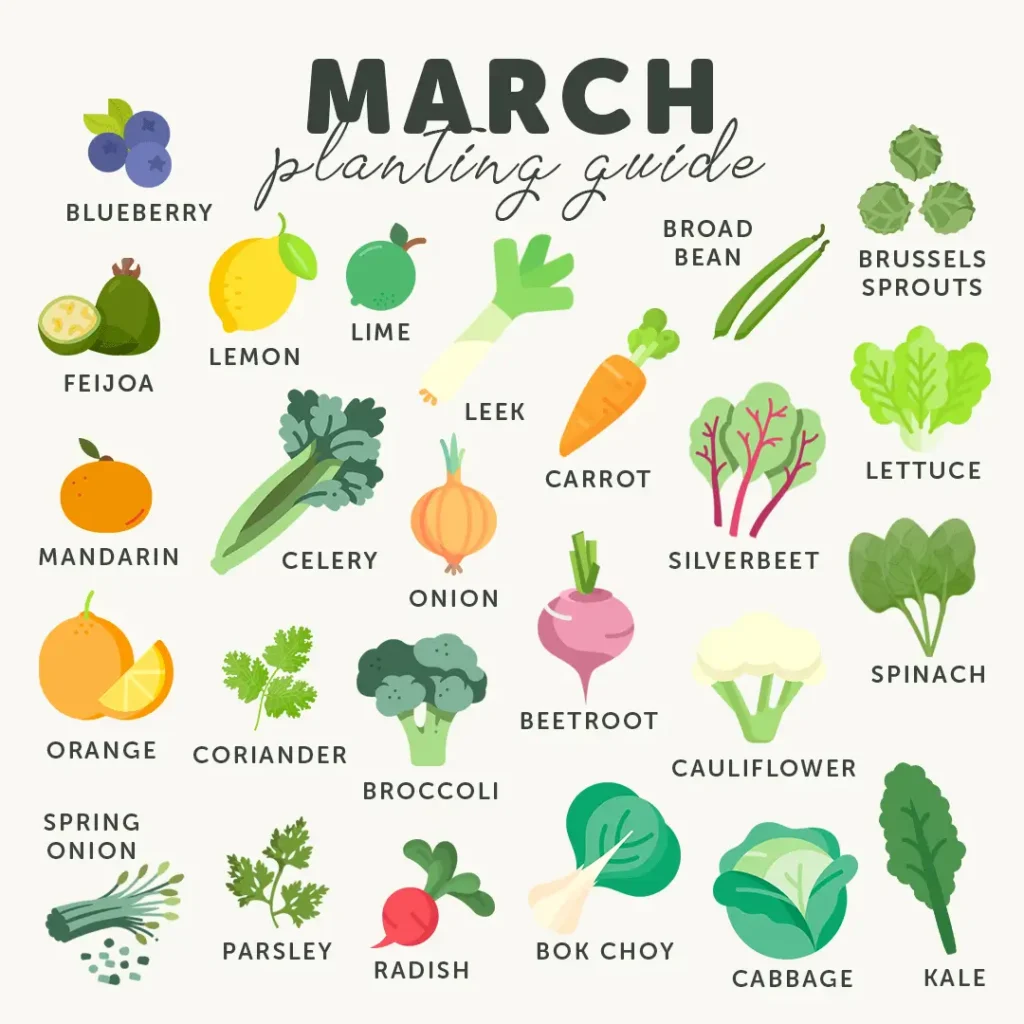
5. Essential Care & Maintenance :
Watering :
- Keep the soil evenly moist, especially during germination.
- Avoid overhead watering to prevent fungal diseases.
Fertilizing :
- Use balanced organic fertilizer every 3-4 weeks.
- Leafy greens benefit from high nitrogen feeds like fish emulsion.
Mulching for Moisture Retention :
- Apply a thin layer of straw or grass clippings to retain moisture and suppress weeds.
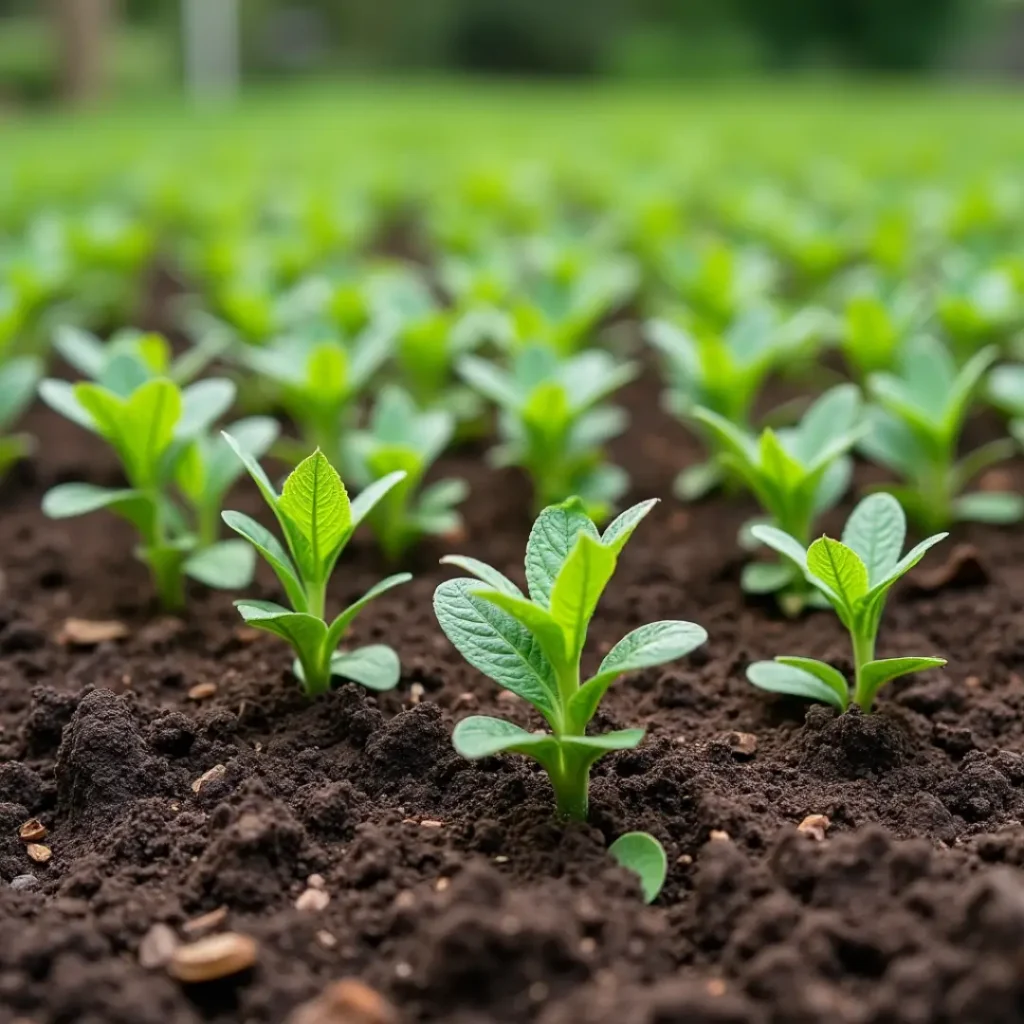
6. Common Problems & Solutions :
| Problem | Cause | Solution |
|---|---|---|
| Yellow leaves | Overwatering | Reduce watering, improve drainage |
| Leggy seedlings | Low light | Move to a sunnier spot or use grow lights |
| Aphids | Pest infestation | Spray with neem oil or introduce ladybugs |
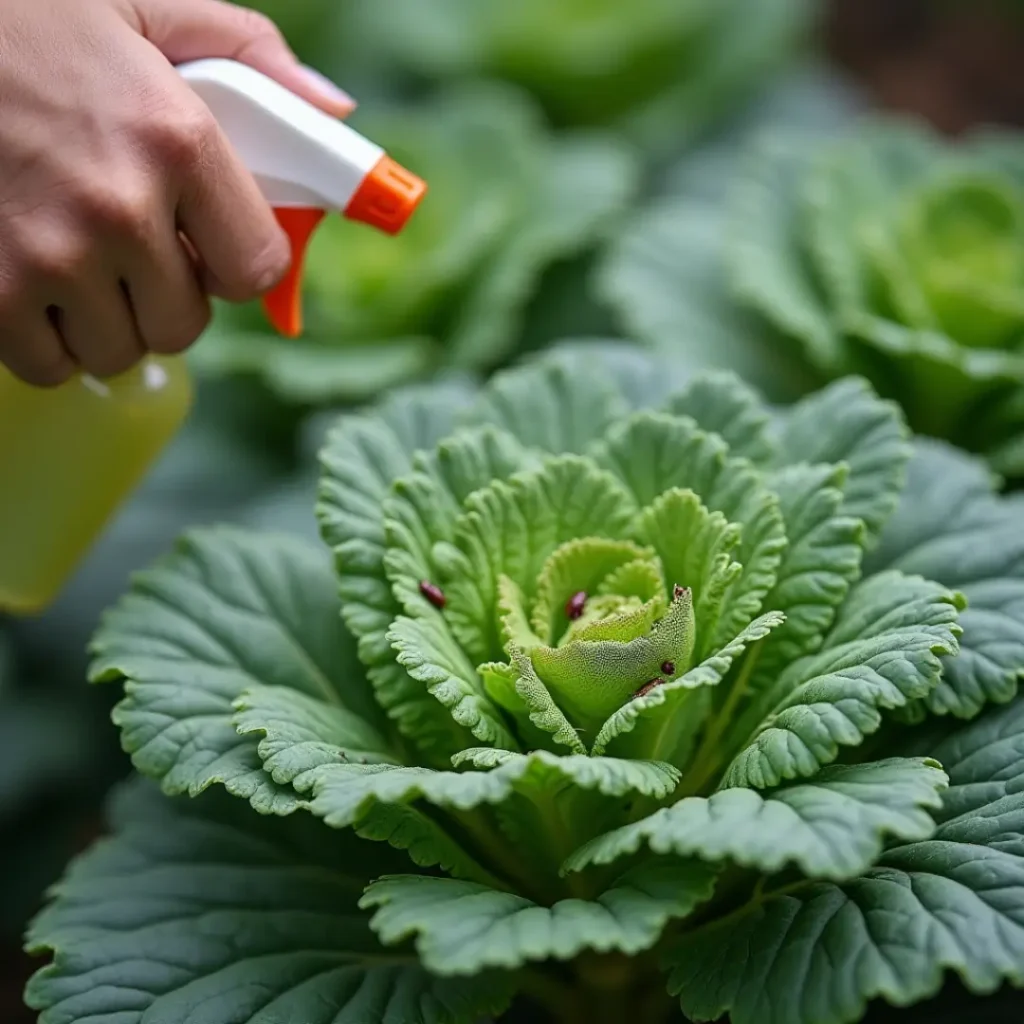
7. Harvesting & Maximizing Yield :
Best Harvesting Times :
- Radishes & Arugula: 25-30 days.
- Lettuce & Spinach: Cut outer leaves as needed.
- Carrots & Beets: 60-80 days.
Extending the Growing Season :
- Use succession planting for a continuous harvest.
- Protect crops with floating row covers to extend into warmer months.
8. Final Thoughts & Call to Action :
March is an ideal time to start your vegetable garden with easy-to-grow, cool-season crops. By following these planting, care, and harvesting strategies, you’ll ensure a healthy and productive garden.
Start today ! Select your seeds, prepare your soil, and enjoy the satisfaction of growing your own fresh produce.
9. Conclusion :
With the right plant choices and care, March-planted vegetables can yield a productive, nutritious, and sustainable harvest.
Whether you’re a beginner or experienced gardener, using the strategies outlined in this guide will help you cultivate a bountiful spring garden with ease.
10. FAQs
1. What are the best vegetables to plant in March for beginners ?
For beginners, the easiest vegetables to plant in March include radishes, lettuce, spinach, peas, carrots, beets, kale, and onions. These crops are low-maintenance, quick-growing, and tolerant of cool temperatures. Radishes and lettuce, in particular, are great for fast results.
2. Can I start planting in March if there’s still frost in my area ?
Yes! Many cool-season vegetables can withstand light frosts and even benefit from them. Crops like kale, spinach, carrots, beets, peas, and cabbage thrive in early spring temperatures. However, if heavy frost is expected, use row covers, cold frames, or cloches to protect seedlings.
3. Should I plant seeds directly in the soil or start them indoors ?
It depends on the vegetable:
- Direct sow (plant seeds in the soil): Carrots, radishes, beets, turnips, peas, and spinach.
- Start indoors & transplant later: Lettuce, cabbage, kale, bok choy, and onions.
Starting indoors helps with early growth and protects young plants from temperature fluctuations.
4. How do I improve soil quality for early spring planting ?
To prepare soil for March planting:
- Loosen the soil to improve aeration.
- Mix in organic compost to enhance nutrients.
- Ensure proper drainage to prevent root rot.
- Use mulch to retain moisture and regulate temperature.
Amending your soil early ensures stronger root development and healthier crops.
5. How often should I water my March vegetable garden ?
Early spring crops need consistent moisture, but overwatering can lead to disease.
- Water 1-2 times per week, depending on rainfall.
- Keep the soil moist but not soggy.
- Mulch around plants to reduce evaporation and maintain soil moisture.
Avoid watering in the evening to prevent fungal growth.
6. What are the most common pests in early spring gardening, and how can I control them ?
Common March garden pests include:
- Aphids – Control with neem oil or introduce ladybugs.
- Cabbage worms – Use floating row covers and sprinkle diatomaceous earth around plants.
- Slugs and snails – Set up beer traps or apply crushed eggshells around plants.
- Flea beetles – Plant marigolds and use row covers.
Practicing companion planting and using natural pest deterrents helps protect your crops.
7. How can I increase my vegetable yield when planting in March ?
To maximize yield:
- Practice succession planting: Sow seeds every 2-3 weeks for a continuous harvest.
- Use vertical gardening: Grow peas and climbing vegetables on trellises to save space.
- Rotate crops yearly: Prevents soil depletion and reduces pests.
- Fertilize naturally: Use compost or fish emulsion for nutrient-rich soil.
With proper planning and care, your garden will be productive throughout spring and summer.
8. When can I start harvesting my March-planted vegetables ?
- Radishes & Arugula: Ready in 3-4 weeks.
- Lettuce & Spinach: Harvest outer leaves continuously after 4-6 weeks.
- Carrots & Beets: Fully mature in 60-80 days, but baby carrots can be picked earlier.
- Peas: Ready in 50-70 days when pods are full.
Harvest in the morning for peak freshness, and use succession planting to keep crops growing.

